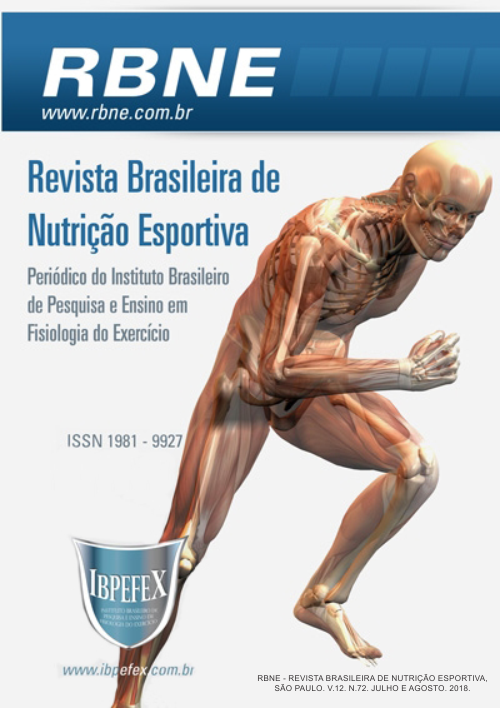Evaluation of the anthropometric profile of athletes of a time of american football of Belém do Pará
Abstract
American football is a team and contact sport that uses physical attributes of the athletes, such as speed, agility, strength and technique, with the objective that the ball arrives at the opposite side doing the touchdown. There are 15 states in Brazil that have their federations, and in Pará there are already 6 federated teams, with a increasing number over the years. It is a sport that explores the most varied biotypes, each position is attributed according to the physical particularities of the athletes. It's importante to Know nutritional status of athletes, aiming to improve performance and to promote a better quality of life, preventing health problems. The objective of this research is to evaluate the anthropometric profile of the athletes of a football team from Belém-Pará. 35 athletes were evaluated, in which anthropometric measurements (weight, height, circumferences and skinfolds), then the results were connected to the athlete position in the team. Adequate nutritional status was observed in the profile of 6 of the 8 evaluated positions. However, 88.57% of the athletes presented degrees of obesity through the 5 evaluation methods applied.
References
-CBFA. [s.d]. Disponível em: <http://futebolamericanobrasil.com/>. Acesso em 12/05/2017.
-Curti, A. Manual de Futebol Americano. 2016.
-Durin. J.; Womersley, J. Body fat assessed from total body density and its estimation from skinfold thinfold thickness: measurement on 481 men and women aged from 16 to 72 years. Br. J. Nutr. Vol. 32. p. 77-97. 1974.
-Frisancho, A. Anthropometric standards for the assessments of growth and nutritional status. University of Michigan. 1990.
-Gallangher,D.; e colaboradores. Healthy percentage body fat ranges: an approach for developing guidelines based on body mass index. Am J ClinNutr. Vol. 72. p. 694-701. 2000.
-Lohman, T.; Roche A.; Martorell, R. Anthropometric standardization reference manual. Human Kinetics: Champaign, 1988.
-NFL. 2017. Disponível em: <http://www.nfl.com/>. Acesso em 12/05/2017.
-Vasconcelos, F.; Moura, S.; Marques, S.; Mota, E. Manual de Avaliação Nutricional, Belém, 2015.
-Vannucchi, H.; Unamuno, M.; Marchini, J. Avaliação do estado nutricional. Simpósio Semiologia Especializada. Ribeirão Preto. Vol. 29. p. 5-18. 1996.
-Witt K.; Bush E. College athletes with an elevated body mass index often have a high upper arm muscle area, but not elevated triceps and subscapular skinfolds. J Am Diet Assoc. Vol. 105. p. 599-602. 2005.
-World Health Organization. Obesity. Preventing and Managing the Global Epidemic. Report of a WHO consultation on Obesity, Geneva: World Health Organization. p. 107-158. 1997.
-Yang, G.; colaboradores. Neck circumference positively related with central obesity, overweight, and metabolic syndrome in Chinese subjects with type 2 diabetes: Beijing Community Diabetes Study 4. Diabetes Care. Vol. 33. Núm. 11. p. 2465-2467. 2010.
Authors who publish in this journal agree to the following terms:
- Authors retain the copyright and grant the journal the right of first publication, with work simultaneously licensed under the Creative Commons Attribution License BY-NC which allows the sharing of the work with acknowledgment of the authorship of the work and initial publication in this journal.
- Authors are authorized to enter into additional contracts separately for non-exclusive distribution of the version of the work published in this journal (eg, publishing in institutional repository or book chapter), with acknowledgment of authorship and initial publication in this journal.
- Authors are allowed and encouraged to post and distribute their work online (eg, in institutional repositories or on their personal page) at any point before or during the editorial process, as this can bring about productive change as well as increase impact and impact. citation of published work (See The Effect of Free Access).






